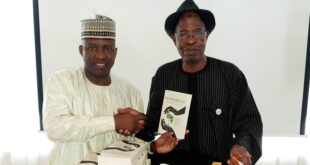Elections present a milestone beyond which countries either strengthen their democratic credentials or become failed states. Often states fail when there are either perceived or blatant election malpractices. This in turn can lead to prolonged civil unrest. Numerous cases exist across the continent. John Walubengo, a lecturer at the Multimedia University of Kenya, uses the Kenyan case to illustrate how election processes can be compromised, and then brought back from the brink with the use of technology.
Following the election in 2007 Kenya erupted into two months of unprecedented conflict. People were unhappy with the outcome which saw Mwai Kibaki of the incumbent Party of National Unity being declared the winner ahead of Raila Odinga and his Orange Democratic Movement. Many disputed the final tally.
To preempt a similar situation in future elections, a commission led by former South African judge, Justice Johann Kriegler, was set up. The Kriegler Commission made several critical findings. These include instances of double voter registration, widespread impersonation and ballot stuffing. It concluded that, as a result, it was impossible to know who actually won the election.
The report also made a number of recommendations. The main ones were that technology should be used in future elections to avoid manipulation of the process.
The Kenyan government acted on the recommendations and elections electronic systems had been put in place by the time of the 2013 poll. But it wasn’t all plain sailing. There were system failures which led to another contested outcome. This was finally settled by the Supreme Court.
As Kenya gears up for the next poll in August, questions are being asked about how well prepared the country is this time round. The issue has become a particularly hot topic in the wake of the government’s decision to allow for a backup manual system to kick in if the technology fails again.

This has raised concerns that the government will pre-emptively switch to the manual system raising the possibility that the vote will be rigged.
Types of voter fraud
The Kriegler report found a range of election malpractices. These include:
- Double voter registration. This occurs when prospective voters register twice in different locations. These voters then manipulate the system by voting twice for the same candidate.
- Impersonation. This happens when voters whose names are on the register don’t show up to vote but are listed as having voted.
- Ballot stuffing. This is one of the most blatant election malpractices and involves the placing of pre-marked ballot papers into ballot boxes before voting commences.
A combination of all three led to high voter turnout in the strongholds of the two main candidates, leading to a skewed election result.
The report concluded that Kenya’s manual election system facilitated the malpractices.
The place of technology
The Kriegler report recommended a number of technological fixes to address some of the vulnerabilities inherent in the manual process. These included biometric voter registration, electronic voter identification and a results transmission system.
By 2016, the 2011 Elections Act had been revised to anchor the electronic systems in law.
Kenya now has some of the most advanced election technology in place. This includes a biometric voter registration process which involves capturing biological features such as the fingerprints of prospective voters. This means that at the end of voter registration the election body can electronically audit the records, picking out and deleting duplicates.
Biometric features captured during voter registration are also used on election day to ensure that those voting are indeed those who registered.
This process is known as electronic voter identification and requires that a voter presents their biometrics for validation prior to voting. Voter identification eliminates the ‘ghost-voter’ problem as the electronic voter identification equipment keeps a tally of the registered voters who actually turn up to vote.
It also eliminates the threat of vote manipulation by requiring voters to impress their fingerprints on specialised equipment which highlights inconsistencies between the electronic and manual tallies.

The final piece of technology recommended by Kriegler – the results transmission system – ensures that voting numbers from polling stations are not changed before they reach the tallying centres.
To avoid changes in the figures approved at the polling station, the presiding officer at each station is expected to transmit the numbers electronically through a secure mobile phone.
As such, the numbers are counted electronically in real-time as they stream into the tallying centres.
The results transmission system has the added advantage of preventing fraudsters from delaying the announcement of results so as to fiddle with the numbers to meet the magical 50%+1 threshold.
The way forward
The introduction of these technologies means that Kenya is now in a position to minimise election fraud and to guarantee a credible electoral process.
But concerns remain, particularly around the contentious amendment to allow for a ‘complimentary’ voting system to be put in place in the event of technology failure.
Will Kenya’s 2017 election process revert to pre-2007 status? Only time will tell whether Kenya has indeed become a mature democratic state or whether it will join the league of failed states.
————————————————————————
This article was originally published on The Conversation. Read the original article
 THE AFRICAN COURIER. Reporting Africa and its Diaspora! The African Courier is an international magazine published in Germany to report on Africa and the Diaspora African experience. The first issue of the bimonthly magazine appeared on the newsstands on 15 February 1998. The African Courier is a communication forum for European-African political, economic and cultural exchanges, and a voice for Africa in Europe.
THE AFRICAN COURIER. Reporting Africa and its Diaspora! The African Courier is an international magazine published in Germany to report on Africa and the Diaspora African experience. The first issue of the bimonthly magazine appeared on the newsstands on 15 February 1998. The African Courier is a communication forum for European-African political, economic and cultural exchanges, and a voice for Africa in Europe.




























